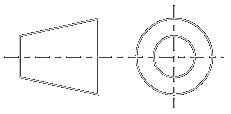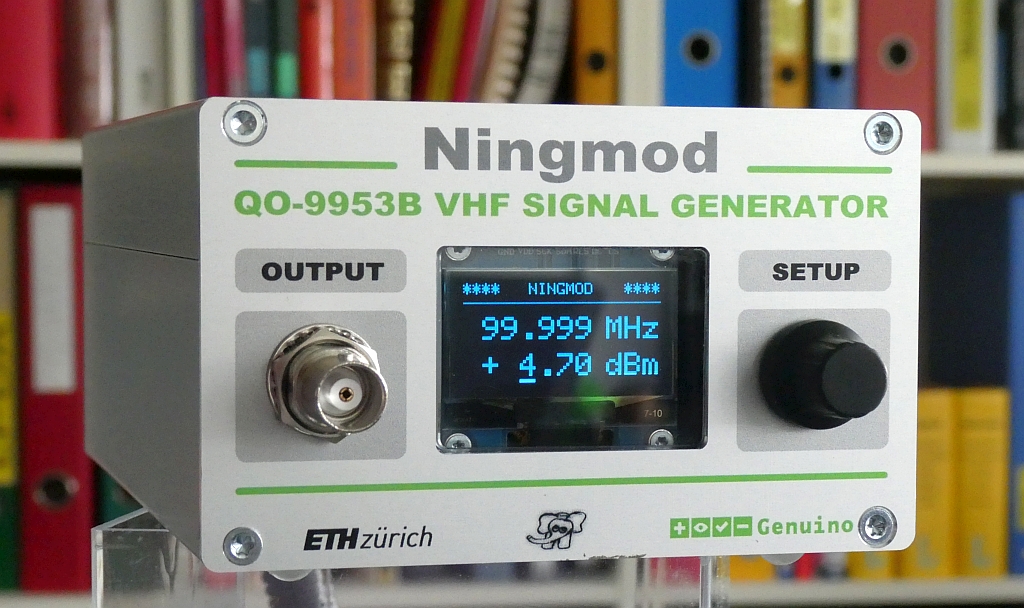
Categories
Statistics
Since 08.08.2014
Counts only, if "DNT = disabled".
Your IP is 3.142.198.250
ec2-3-142-198-250.us-east-2.
Counts only, if "DNT = disabled".
Your IP is 3.142.198.250
ec2-3-142-198-250.us-east-2.
Info
เราจะทำแบบวิศวกรผู้ยิ่งใหญ่

25. December 2024
YOU RATED THIS ...
avg = 0.0 , n = 0


Arduino-Ningmod.php 10777 Bytes 04-06-2024 20:14:25
Arduino/Genuino RF Synthesizer "Ningmod"
With the AD9953 and some co-workers

| Frequency Range | 9.999 MHz to 123.456 MHz |
| Resolution | 1 kHz |
| Output Power | -25 ... +15 dBm, using GALI-5+ |
| DC supply voltage | 15 V ... 30 V, less than 199 mA |
✈ The building Blocks • Functional Description
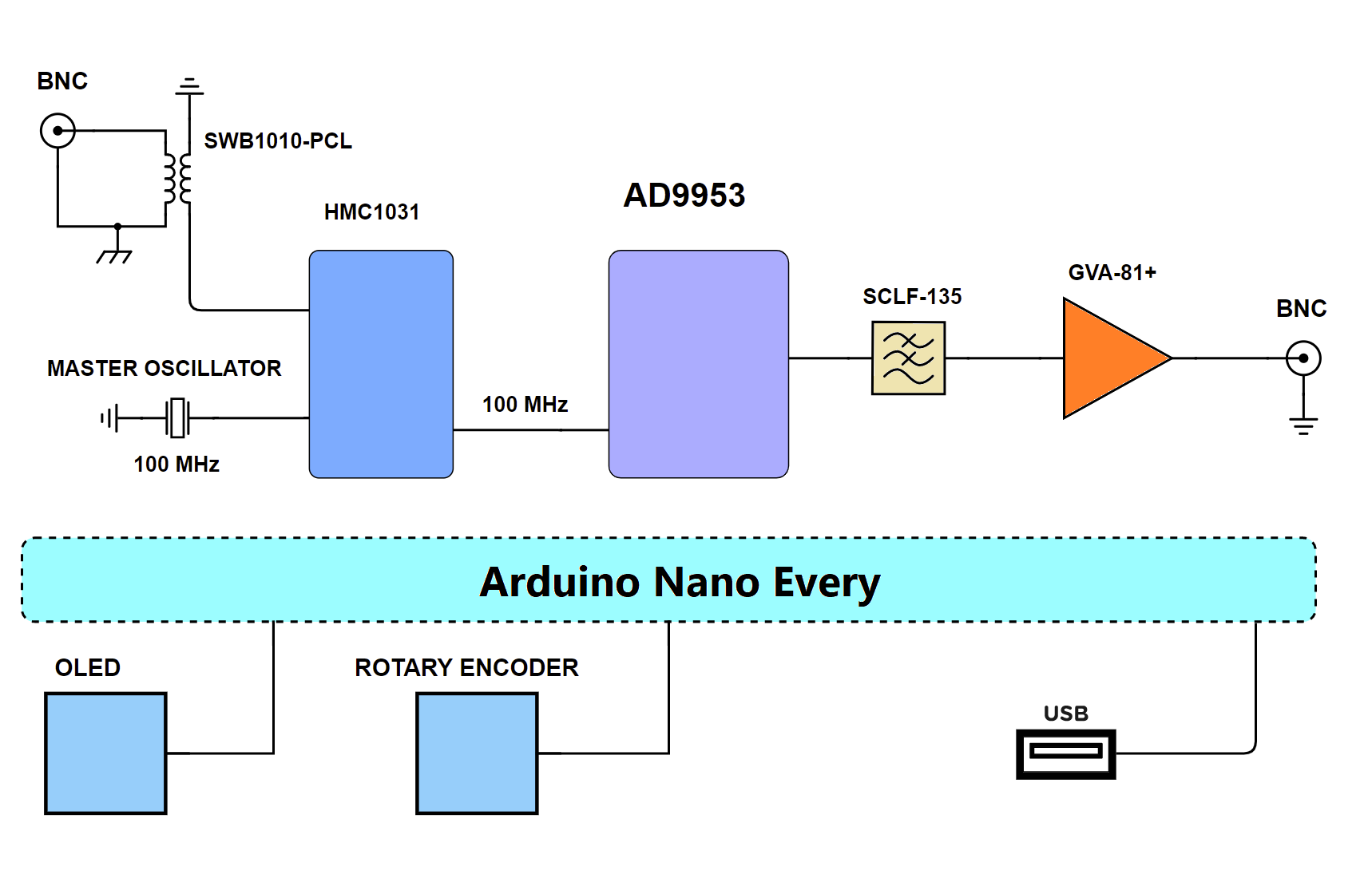
Inspired by the success of the Kumod we also wanted to have a single RF source for our "ususal suspects" of frequencies, which are 15 MHz, 80 ... 123 MHz. So this is more a soldering and programming exercise - but it has the precision of the used frequency standard.
The brain here is the Arduino Nano Every, which handles the user input as well as the programming of the dds chip and the updating of the oled.
Besides that, it is waiting for SCPI commands, sent via usb.
The output of the AD9953 is lowpass filtered by an SCLF-135 from Mini-Circuits. A Gali-5+ delivers some power. The amplitude is software controlleable.
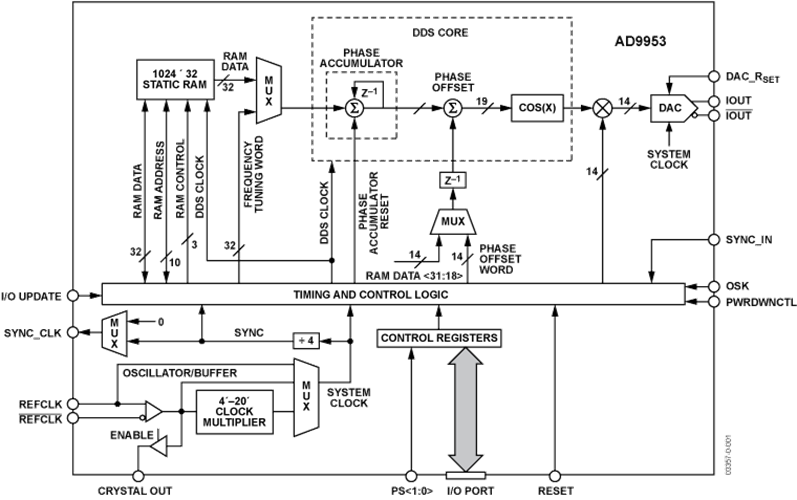
The workhorse, the AD9953. Drawing courtesy of Analog Devices
And yes, it can do so much more. Just some small changes in software :-)
Please accept our apologies, that our arduino sketch does not solve your homework. Consider this as a starting point only ...
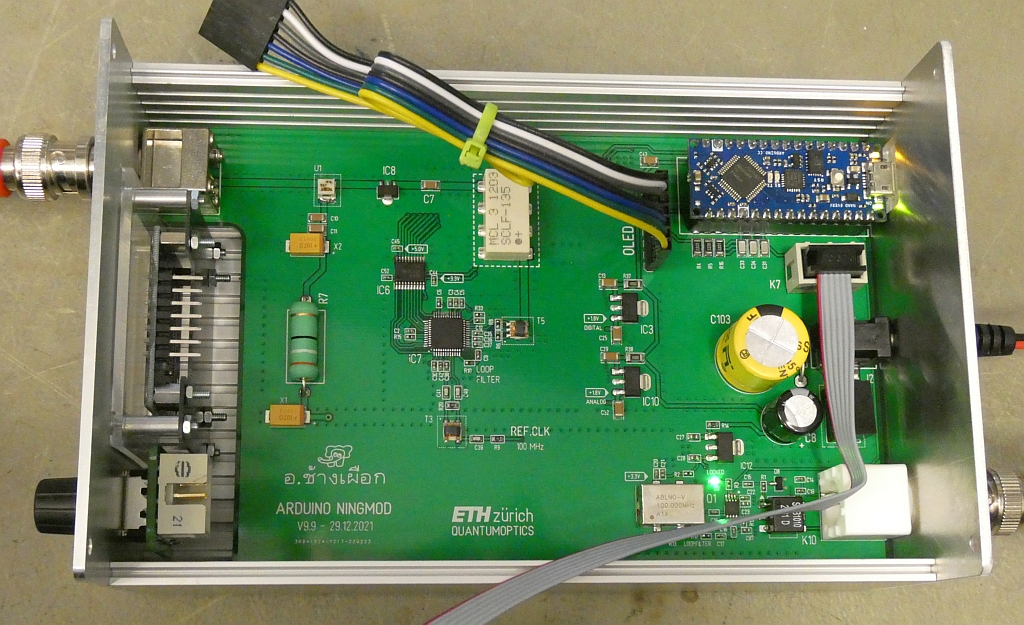
A look inside. And this time, the intersting things are not hidden under the cable :-)
✈ Amplitude Calibration
It is very likely, that other homebrewers have different amplifiers in their treasure-box.
In order to measure the ASFRegister - Amplitude characteristics, we used the function
CALA:xxxxx. You can send values from 0x0000 to 0x3FFF (decimal 0 to 16383) to the device while measuring
the output power with a trustworthy Powermeter. We did this at 50.0 MHz. The values can
then be hacked into your favourite spreadsheet.
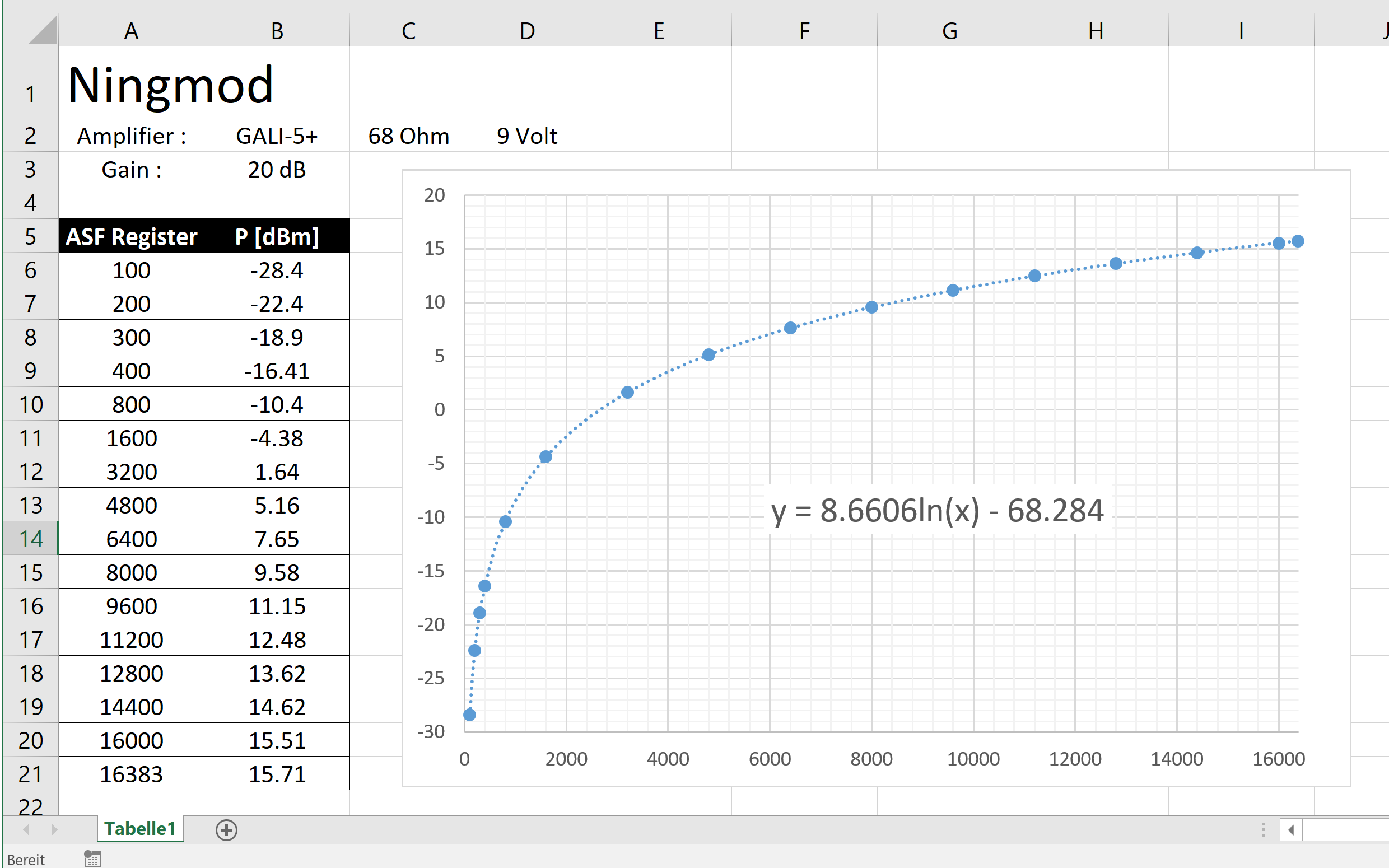
measured values and trend line, kindly provided by the spreadsheet
All we have to do is to calculate the inverse function of the trend line. This is then put into the function UpdateASF() (line 181) and we are almost finished. The task remaining is the adaption of AMPLI_MIN and AMPLI_MAX, the floor and ceiling of our amplitude business. This is done in line 37+38.

measured values and trend line, kindly provided by the spreadsheet
All we have to do is to calculate the inverse function of the trend line. This is then put into the function UpdateASF() (line 181) and we are almost finished. The task remaining is the adaption of AMPLI_MIN and AMPLI_MAX, the floor and ceiling of our amplitude business. This is done in line 37+38.
✈ Downloads
✈ Performance
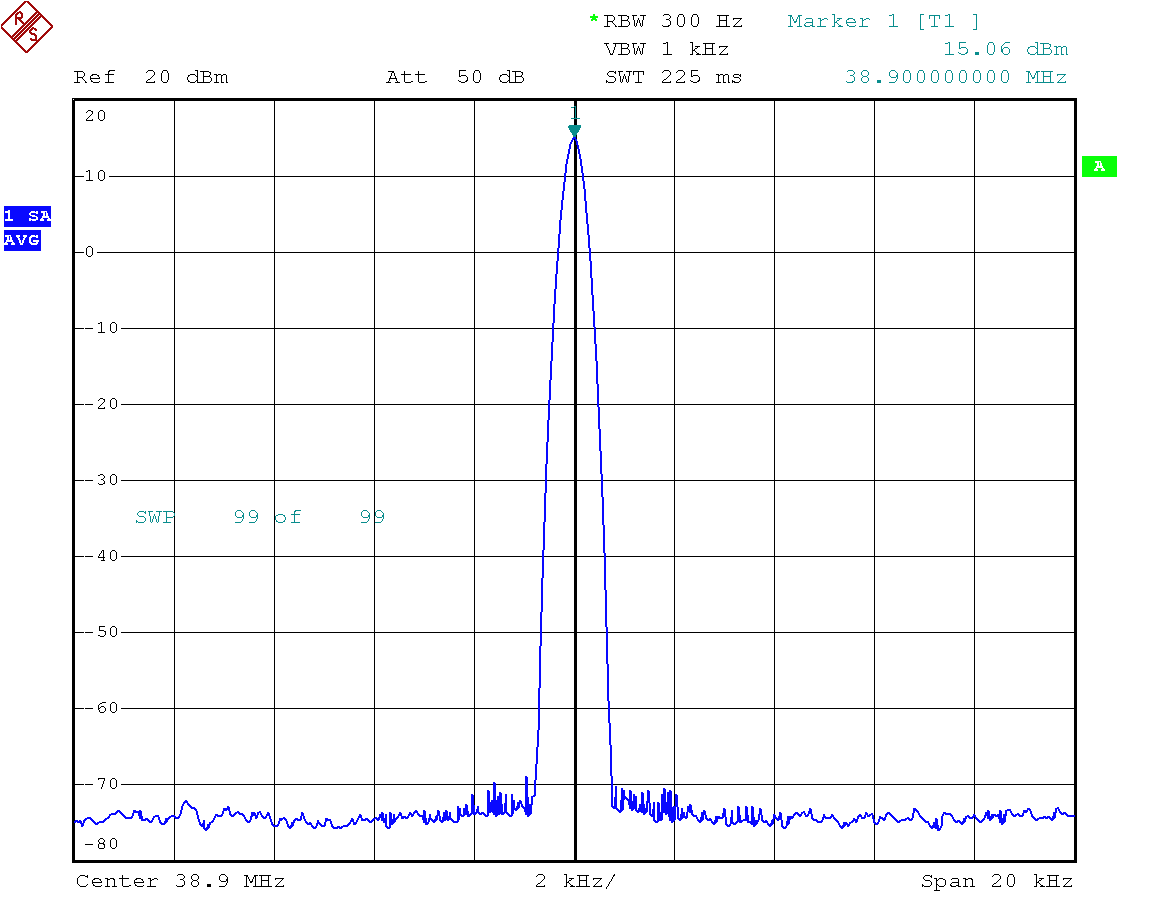
Once upon a time, there was analog television. And the picture carrier was at 38.9 MHz ...
✈ Remote Control of the Ningmod
COM SETTINGS :
Set up the COM port inside the PC according to the following list.
• Baud rate: 115200
• Parity bit: None
• Data bit: 8
• Stop bit: 1
• Data flow control: None
Set up the COM port inside the PC according to the following list.
• Baud rate: 115200
• Parity bit: None
• Data bit: 8
• Stop bit: 1
• Data flow control: None
COMMAND SYNTAX :
*IDN?
Description: Returns the Device's identification.
Example *IDN?
Returns NINGMOD 1.0 BY CHANGPUAK.CH + Frequency + Amplitude + Lockstatus
*LOCK?
Description: Returns the actual Lockstatus
Example *LOCK?
Returns VCXO is unlocked. or VCXO is locked.
SETF:xx.xxx or SETF:x.x
Description: Sets the Output Frequency
Example SETF:19.1
Returns New frequency : 19.100 MHz
SETA:x.x
Description: Sets the Output Power
Example SETA:-3.0
Returns New amplitude : -3.000 dBm
CALA:xxxxx
Description: Writes value directly into ASF register. For Calibration.
Example CALA:9999
Returns New ASFR : 9999
*IDN?
Description: Returns the Device's identification.
Example *IDN?
Returns NINGMOD 1.0 BY CHANGPUAK.CH + Frequency + Amplitude + Lockstatus
*LOCK?
Description: Returns the actual Lockstatus
Example *LOCK?
Returns VCXO is unlocked. or VCXO is locked.
SETF:xx.xxx or SETF:x.x
Description: Sets the Output Frequency
Example SETF:19.1
Returns New frequency : 19.100 MHz
SETA:x.x
Description: Sets the Output Power
Example SETA:-3.0
Returns New amplitude : -3.000 dBm
CALA:xxxxx
Description: Writes value directly into ASF register. For Calibration.
Example CALA:9999
Returns New ASFR : 9999
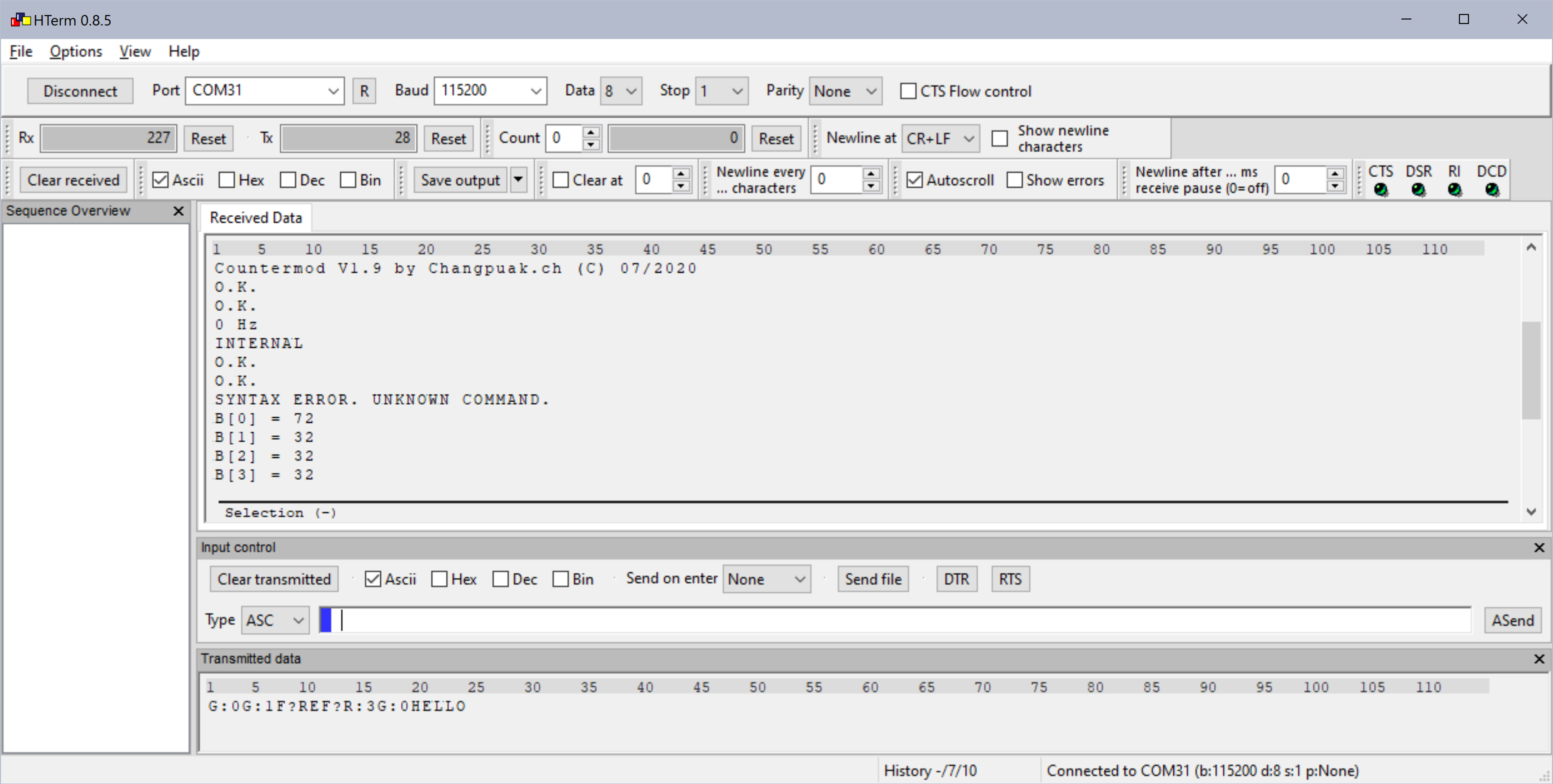
Remote Control with e.g. HTerm 0.8.5 from Tobias Hammer
✈ Some more pictures ...
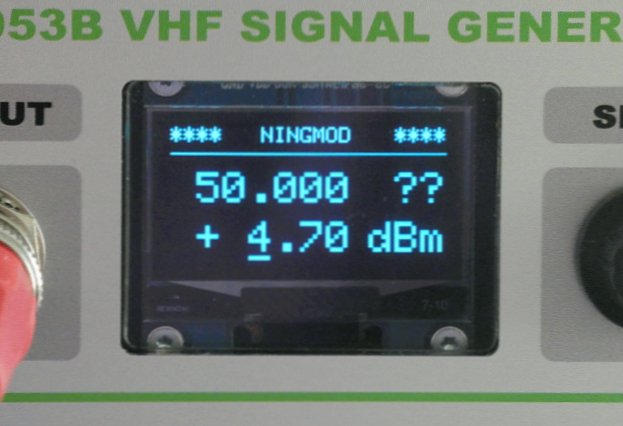
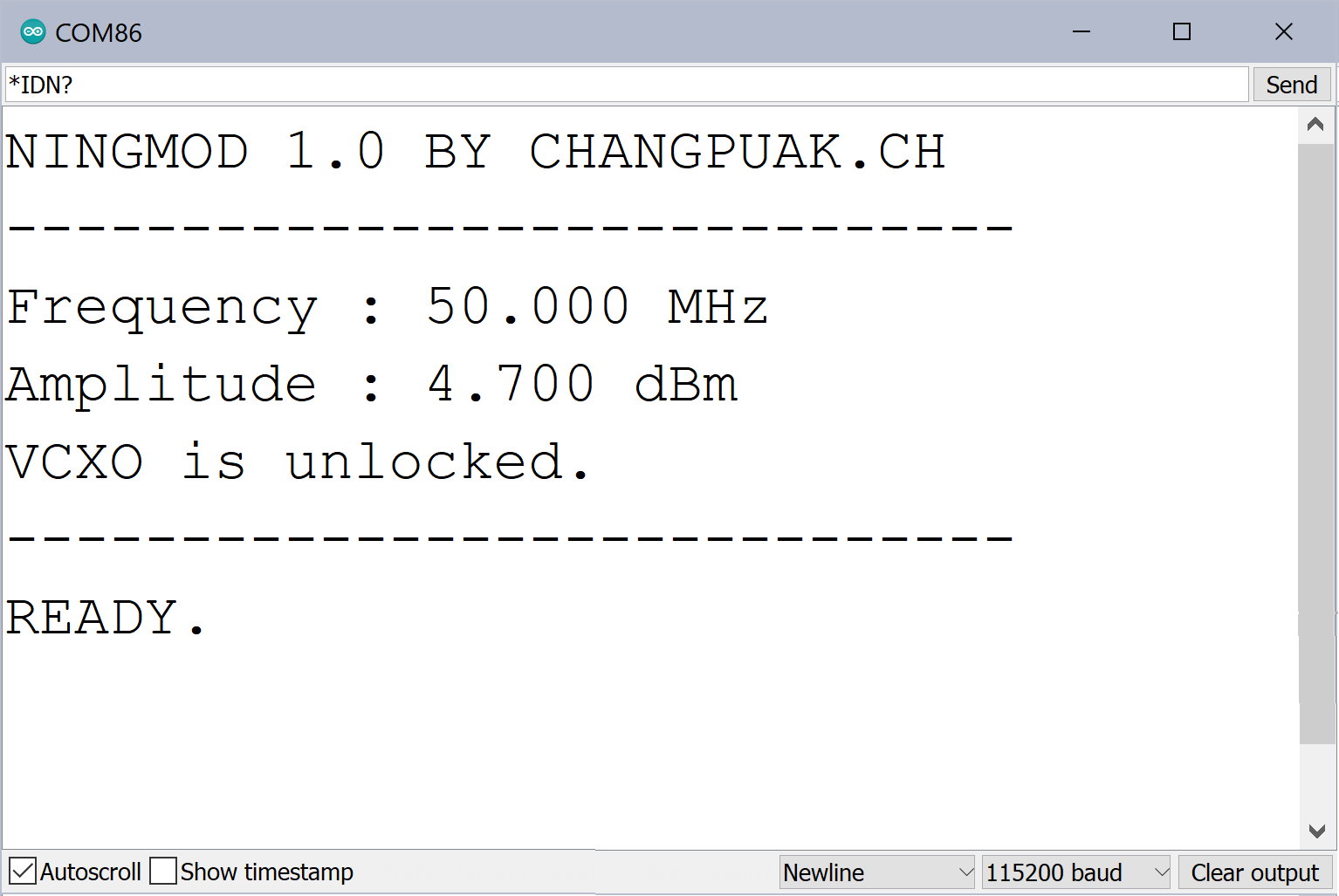
✈ Share your thoughts
The webmaster does not read these comments regularely. Urgent questions should be send via email.
Ads or links to completely uncorrelated things will be removed.
Your Browser says that you allow tracking. Mayst we suggest that you check that DNT thing ?
 ช้างเผือก
ช้างเผือก





